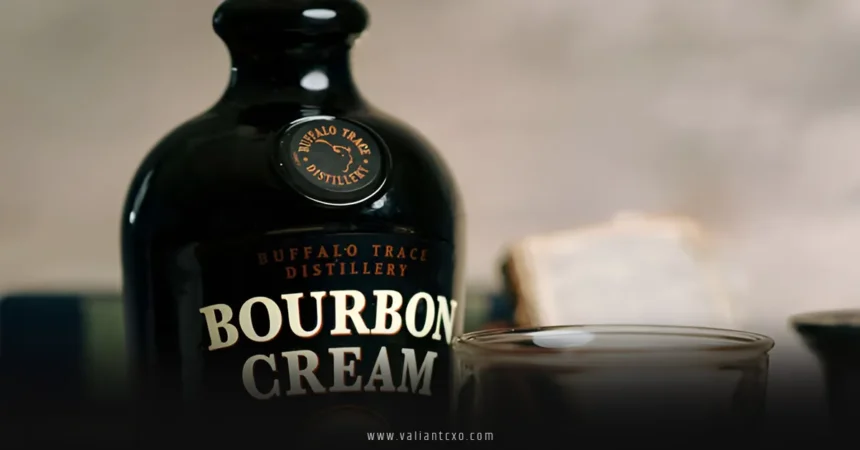Kentucky, the heartland of American bourbon, is facing a sobering reality. The state’s $9 billion whiskey industry, long a symbol of tradition and economic pride, is grappling with a wave of Kentucky whiskey bankruptcies and financial challenges. From small craft distilleries to established brands, several Kentucky whiskey producers have hit rough waters, with some filing for Chapter 11 bankruptcy and others shutting down entirely. So, what’s driving these Kentucky whiskey bankruptcies? Let’s dive into the factors shaking up this iconic industry and explore what it means for bourbon lovers across the USA.
The Bourbon Boom and Its Hangover
For years, Kentucky’s bourbon industry enjoyed a remarkable boom. Starting in the 2000s, demand for bourbon skyrocketed, with distilleries filling over 3.2 million barrels in 2023 alone. This surge led to a proliferation of new distilleries, massive investments in production, and a thriving bourbon tourism scene that drew 2.5 million visitors in 2024. But as the saying goes, what goes up must come down. The industry is now facing a “hangover” from this rapid expansion, with oversupply, declining demand, and economic pressures creating a perfect storm for Kentucky whiskey bankruptcies.
Recent Kentucky Whiskey Bankruptcies
Several high-profile distilleries have made headlines for their financial struggles:
Luca Mariano Distillery
Just months after its grand opening in June 2025, Luca Mariano Distillery in Danville, Kentucky, filed for Chapter 11 bankruptcy in July 2025, contributing to the wave of Kentucky whiskey bankruptcies. Its parent company, LMD Holdings, is burdened with over $34.5 million in debt, including a disputed claim of $25 million from its largest creditor. Founder Francesco Viola remains optimistic, stating the filing aims to “maximize asset value” and position the distillery for a successful recovery. However, the distillery’s rapid descent into bankruptcy so soon after launching highlights the challenges new players face in a crowded market.
Garrard County Distilling
This $250 million facility in Lancaster, Kentucky, began production in early 2024 but was placed in receivership and closed by April 2025, marking another chapter in Kentucky whiskey bankruptcies. Facing $27 million in debt to Truist Bank and $2.2 million in liens, the distillery’s ambitious plans unraveled quickly. The closure has left 60 workers indefinitely suspended, dealing a blow to the local economy.
Kentucky Owl and Stoli Group USA
In November 2024, Stoli Group USA and its affiliate, Kentucky Owl, filed for Chapter 11 bankruptcy in a Texas court, adding to the growing list of Kentucky whiskey bankruptcies. With liabilities between $50 million and $100 million, including $5.5 million owed to Bardstown Bourbon Company, the filing followed a cyberattack and a sustained slowdown in U.S. spirits demand. Kentucky Owl, a premium bourbon brand revived in 2014 by Dixon Dedman, had ambitious plans for a $150 million distillery park in Bardstown, but those dreams remain unfulfilled.
Why Are Kentucky Distilleries Struggling?
Several interconnected factors are driving these Kentucky whiskey bankruptcies and financial woes:
Declining Demand for Whiskey
U.S. whiskey sales dropped 1.8% in 2024 to $5.2 billion, reflecting a broader softening in spirits demand post-COVID. Younger consumers, particularly Gen Z, are shifting toward low-ABV options like canned cocktails and non-alcoholic beverages, leaving whiskey distilleries with excess inventory. For example, Campari Group reported an 8.1% year-over-year sales decline for Wild Turkey and Russell’s Reserve, citing a “soft trend” in the U.S. market.
Overproduction and Oversupply
The bourbon boom led to overzealous production, with Kentucky now aging 14.3 million barrels—more than two per resident. This oversupply has created a surplus that’s hard to move in a cooling market, leaving distilleries with idle inventory and strained cash flow, contributing to Kentucky whiskey bankruptcies.
Rising Costs and Inflation
Inflation has driven up production costs, from grain and barrels to energy and labor. Smaller distilleries, like Luca Mariano and Garrard County, often lack the financial cushion to absorb these increases, especially when sales don’t meet expectations, fueling Kentucky whiskey bankruptcies.
Global Trade and Tariff Threats
International markets, a key growth area for bourbon, are under pressure from potential tariffs. The threat of retaliatory tariffs from countries like Canada, which previously ordered $1 billion in Kentucky whiskey annually, has added uncertainty. This is particularly concerning as exports have been a bright spot for some brands amid Kentucky whiskey bankruptcies.
External Shocks
Unique challenges, like the cyberattack that crippled Stoli Group’s operations, have compounded financial difficulties for some distilleries. These unpredictable events can disrupt supply chains and sales, pushing already strained businesses toward Kentucky whiskey bankruptcies.
The Ripple Effects on Kentucky’s Economy
Kentucky’s whiskey industry supports over 23,000 jobs with a $1.6 billion annual payroll, making Kentucky whiskey bankruptcies a significant concern for local communities. Beyond direct job losses, the closures impact bourbon tourism, which generates substantial revenue for hospitality and retail. Supply chain businesses, like cooperages and grain farmers supplying 21 million bushels annually, also feel the pinch. For example, the closure of Garrard County Distilling has left Lancaster reeling, with Mayor Michael Gaffney noting the broader economic fallout.
Is There Hope for Recovery?
While the situation looks grim, Chapter 11 bankruptcy offers a path for reorganization rather than closure. Distilleries like Luca Mariano and Kentucky Owl are banking on restructuring to emerge stronger from Kentucky whiskey bankruptcies. Industry experts suggest that a market correction could weed out weaker players, allowing established brands to stabilize. Some distilleries are also exploring new strategies, such as premium product releases or diversifying into other spirits, to regain footing. For instance, Buffalo Trace recently launched ultra-aged wheat whiskeys to capture the high-end market.
What This Means for Bourbon Fans
For bourbon enthusiasts, these Kentucky whiskey bankruptcies raise concerns about the availability of favorite brands. Kentucky Owl’s premium releases, like its Maighstir Edition, remain highly sought after, but their future is uncertain. Meanwhile, giants like Wild Turkey and Jack Daniel’s are weathering the storm but face declining sales and job cuts. Consumers may see more limited releases or price adjustments as distilleries navigate these challenges.
Conclusion
Kentucky’s whiskey industry is at a crossroads. The bourbon bubble, fueled by decades of soaring demand, appears to be deflating under the weight of oversupply, shifting consumer tastes, and economic pressures. While Kentucky whiskey bankruptcies like those of Luca Mariano, Garrard County, and Kentucky Owl signal tough times, they also highlight the resilience of an industry rooted in tradition. For now, bourbon lovers can still raise a glass to Kentucky’s legacy, but the road ahead will require adaptation and innovation to keep the whiskey flowing.
Read Also:valiantcxo.com


